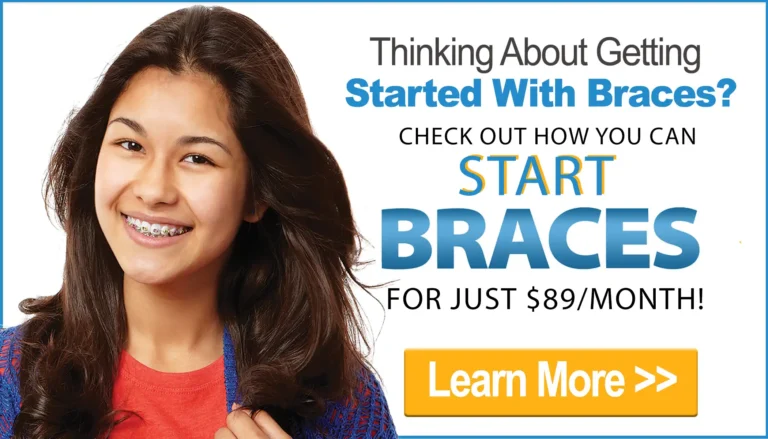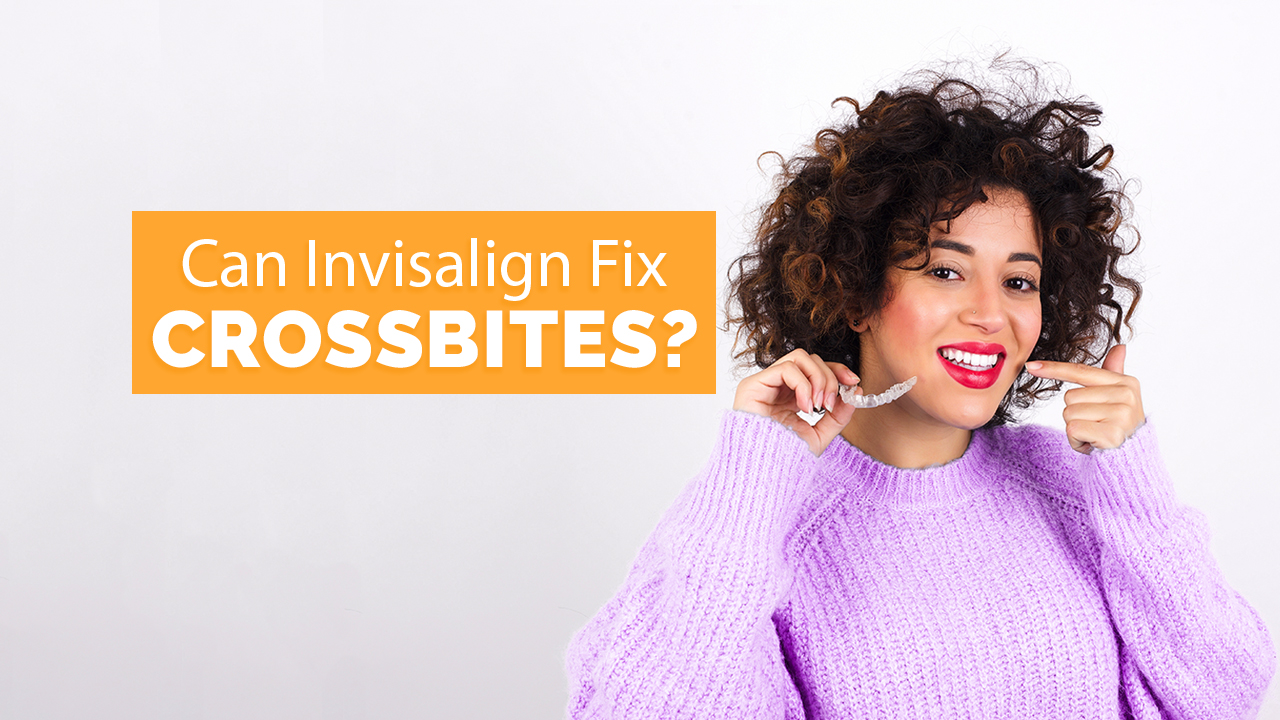
Can Invisalign Fix Crossbites?
By Dr. Tyler Coles – Premier Orthodontics
Table of Contents
You’ve probably heard of crossbites…but do you actually know what they are? . . . and whether Invisalign can fix them?
In this article we’ll define two different types of crossbites, explain how you can tell if you have one, and then answer whether Invisalign can fix either type of crossbites.
We’ll show you actual before and after photos of patients who received crossbite correction so you can see for yourself how Invisalign works on crossbites.
What is a Crossbite?
Before we talk about how to fix crossbites with Invisalign, let’s first define what crossbite bite is (as well as the different types)…
There are two main types of crossbites:
- Posterior Crossbites
- Anterior Crossbites.
If you’ve never heard these terms before, that’s fine. We’ll describe each type of crossbite below and show examples of what each one looks like
What is a Posterior Crossbite?
The word “posterior” means further back in position. So a posterior crossbite is a crossbite that occurs on the back teeth. In cases of posterior crossbite, the upper teeth will be narrower than the lower teeth.
Ideally the upper teeth should be wider than the bottom teeth and should sit outside of the lower teeth. This image here is a good example of how we want the back teeth to sit:
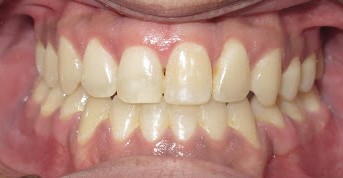
Now let’s look at an example of a posterior crossbite, where the upper teeth sit inside of the lower teeth:
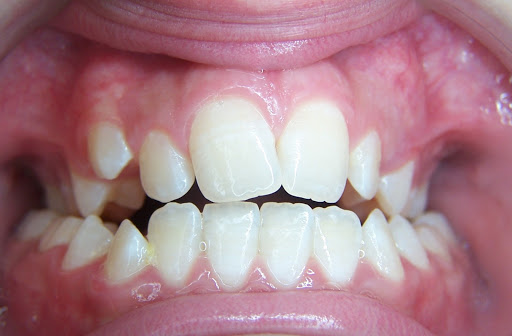
In this picture, both sides of the upper arch fit inside of the bottom teeth. This is called a “bilateral posterior crossbite” because it is a crossbite that occurs on both sides.
Another type of posterior crossbite is when just one side of the upper arch falls inside of the lower teeth. This is called a “unilateral posterior crossbite.” The picture below is a good example:
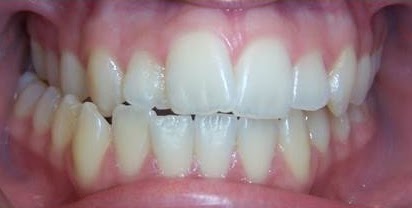
You can see that the teeth on the right side sit entirely inside of the lower arch.
Now you know what a posterior crossbite is and looks like. Let’s move on to anterior crossbites.
What is an Anterior Crossbite?
The word “anterior” means nearer to the front in position. So an anterior crossbite is a crossbite that occurs on the front teeth. You will know it’s an anterior crossbite when one or more of the top teeth fall inside of the bottom teeth.
These pictures here are good examples of a single-tooth anterior crossbite.

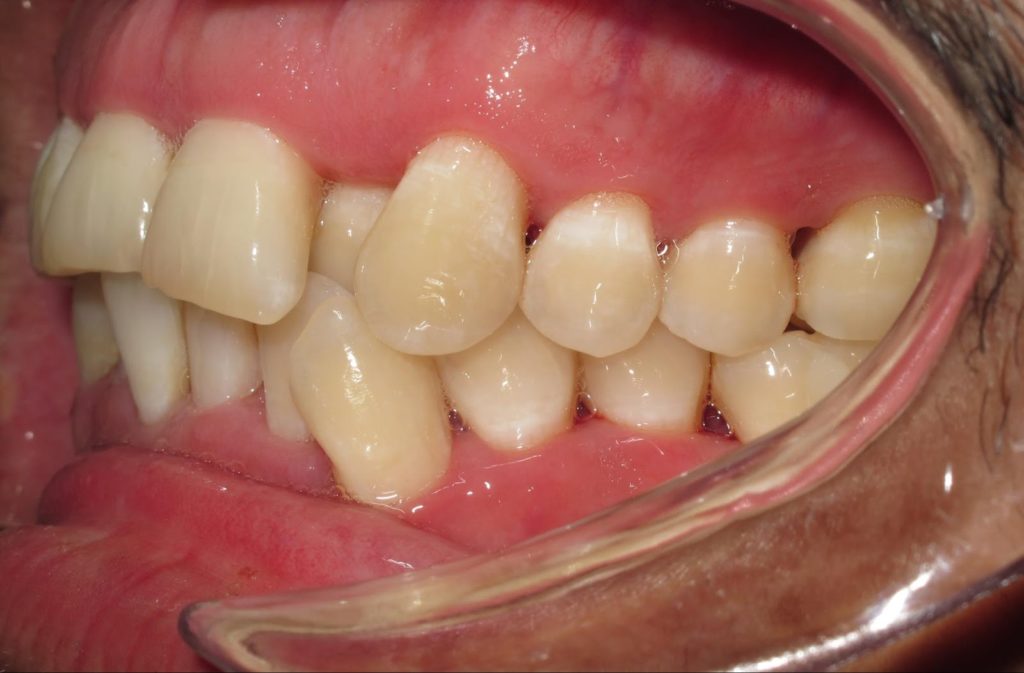
You can see that just one tooth on the upper arch falls behind the teeth on the lower arch.
Another type of anterior crossbite is where multiple teeth sit behind the lower teeth. This is sometimes called an underbite. This patient here is a good example:
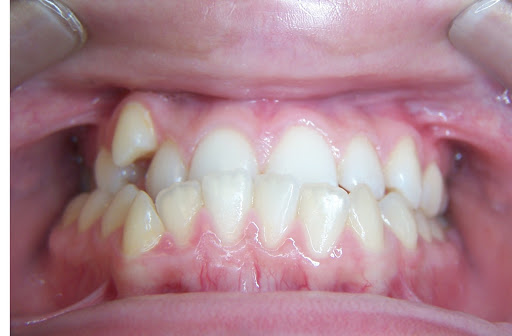
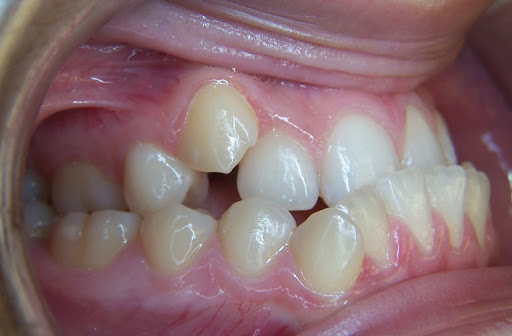
Both single-tooth anterior crossbites, and underbites are defined as “anterior crossbites” because they occur with the front teeth.
Why Are Crossbites a Problem?
You may be wondering why orthodontists consider crossbites a problem…
Crossbites don’t look great cosmetically but more importantly, they can also cause some significant tooth and jaw problems over time.
When crossbites go un-fixed, they can cause:
- A traumatic bite leading to chipped and damaged teeth
- Asymmetric jaw growth
- TMJ and jaw joint problems
- Restricted airways leading to snoring and other sleep problems
Not only can crossbites become physically uncomfortable if left untreated, but they often get more difficult to fix as one gets older.
So now that we’ve defined what crossbites are – let’s discuss which type can be corrected with Invisalign. We’ll also show you before and after photos of patients who had crossbite correction in our office.
So first, let’s talk about posterior crossbites…
Can Invisalign Fix Posterior Crossbites?
If a patient has a mild posterior crossbite, they can usually be treated with a combination of Invisalign and crossbite elastics. This type of treatment usually works best when only a single tooth is in a crossbite.
The patient shown in this picture is a good example. You can see that just one of the teeth in the back are in a crossbite relationship.

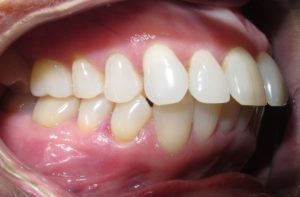
In this animation you will see how braces and rubber bands can be used together to correct mild crossbites. The process is essentially identical with Invisalign and works the same. The elastic band gradually expands or constricts the arches to help align the teeth.
The patient shown in the previous photos was treated with crossbite elastics. The before-and-after photos show just how effective this strategy was.



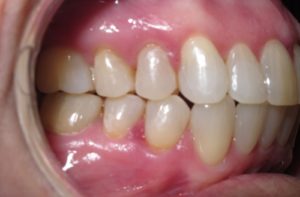
This type of treatment is effective in patients who don’t have a severe posterior crossbite and only need a minor correction.
Next, let’s discuss treatment of a moderate posterior crossbite.
If a patient has a more serious posterior crossbite, a combination of Invisalign and a Quad Helix Expander may be needed. The patient below is a good example of a moderate posterior crossbite:
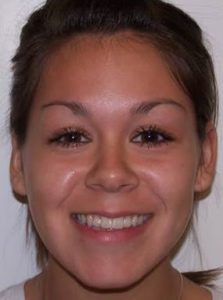

This patient has a “unilateral” posterior crossbite, or a crossbite that occurs just on one side.
These types of crossbites are usually difficult to treat using Invisalign alone, so it will need to be combined with a Quad Helix expander.
In this animation you can see how a Quad Helix Expander can help expand the upper arch and correct a moderate posterior crossbite. Quad Helixes can be used in combination with Invisalign trays and kept in for a period of 4-6 months. Once the expansion is completed, they can be removed and the patient can continue with standard Invisalign treatment.
The patient shown earlier was treated with a Quad Helix Expander you can easily tell that the crossbite was fully corrected with this process.
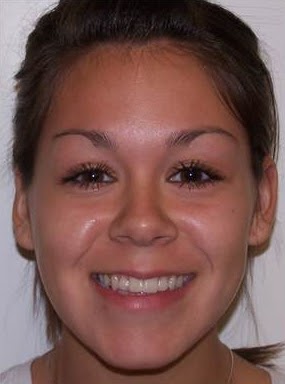

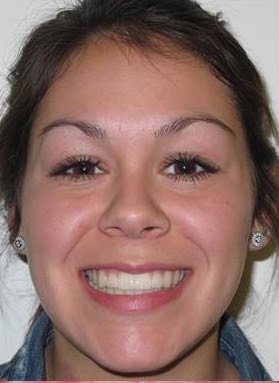
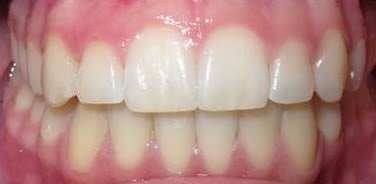
We actually have a video all about Quad Helix Expanders. If you’d like to check it out, click below:
Now let’s talk about how to correct a severe posterior crossbite.
If a patient has a severe crossbite, a combination of Invisalign and a Rapid Palatal Expander or (RPE) may be needed. This type of expander expands both the teeth on the upper arch as well as the bones of the palate (or the bones of the upper arch). This type of expander is generally used only in young children and in growing teenagers. Since this appliance is designed to expand the bones of the palatal, it can only be done successfully within that age range.
The patient shown here is a good example of a severe posterior crossbite that would benefit from a rapid palatal expander:

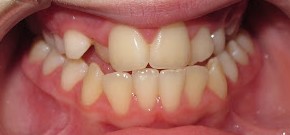
This patient has a “bilateral” posterior crossbite, or a crossbite that occurs on both sides. This animation will demonstrate what a Rapid Palatal Expander or (RPE) looks like, and how it can help expand the upper arch and correct a severe posterior crossbite.
Notice in her before-and-after photos that she was able to get full correction of her posterior crossbite through expanding the upper arch.



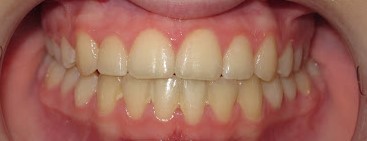
If it is determined that a patient needs an RPE, this is usually done before Invisalign treatment begins. However, sometimes it can be applied at the same time as treatment depending on the needs of the individual patient.
Generally speaking, it’s difficult to correct moderate to severe posterior crossbites with Invisalign alone, and in most cases some form of expander will need to be used in combination with the Invisalign aligners.
Now let’s shift gears and discuss how we fix anterior crossbites with Invisalign. And as a quick reminder, an anterior crossbite occurs with the front teeth.
If a patient has a single tooth anterior crossbite, they can usually be treated with just Invisalign aligners; that means no extra appliances will be needed.
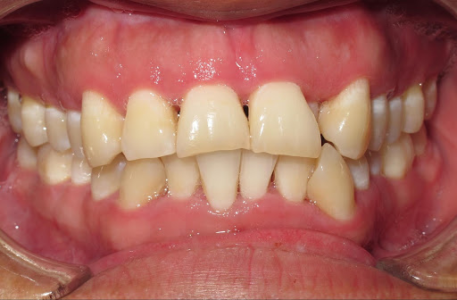
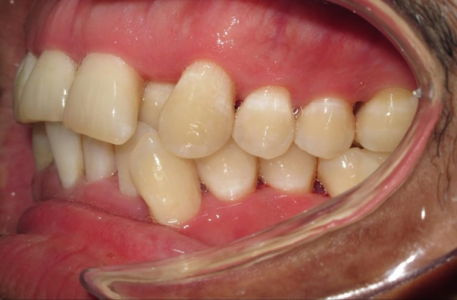
This patient shown here is a good example of a single tooth anterior crossbite. You can see that just one of his front teeth sits behind the lower teeth.
These types of crossbites can generally be treated very successfully with Invisalign aligners.
With the patient shown before, you can see that using only Invisalign, we were able to align his teeth and correct his anterior crossbites.
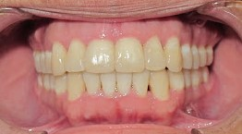
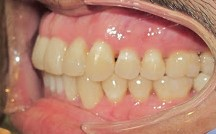
Fixing a single tooth anterior crossbite is much simpler than fixing an anterior crossbite that includes multiple teeth.
Multiple tooth anterior crossbites are usually called underbites. This patient here is a good example of an underbite.

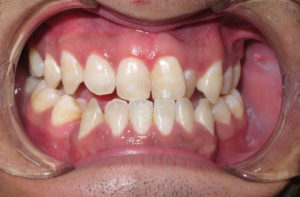
Underbites can be treated with Invisalign, but it may involve a combination of elastics with Invisalign aligners, or in rare cases an extraction. We made an entire video about underbite correction. If you’d like to learn more about underbite correction, you can watch that in the video below:
But, just to show that it is possible, we’ll show you the before-and-after photos of a patient who’s underbite was treated in our office using Invisalign only.

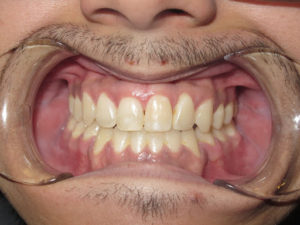
In this article we discussed two different types of crossbites, and how they are treated with Invisalign. Oftentimes, posterior crossbites may have to be treated with a combination of Invisalign and some type of expander, but most of the time it is possible.
Mild anterior crossbite can usually be treated with just Invisalign aligners, but underbites are generally more complicated and may involve some additional appliances, elastics, or even extraction of permanent teeth.
To learn even more about Invisalign and Crossbites, check out our video below.
There are certain types of crossbites that may be treated more efficiently with braces. The only way to know for certain whether braces or Invisalign will work best for you or your child is to have a consultation with an orthodontist.
If you think you or your child may need Invisalign to correct a crossbite, the best place to start is with a free consultation by an orthodontist in your area.
Getting Braces or Invisalign in Phoenix, Chandler, Maricopa, and Casa Grande
Premier Orthodontics has 6 locations providing braces and Invisalign in Phoenix, Chandler, Gilbert, Maricopa, Casa Grande, and Glendale as well as the surrounding areas.
Schedule your free consultation for braces or Invisalign or read our comprehensive guide to the cost of braces . (We are very transparent about our process and our pricing, as you’ll see in this guide.)
Schedule a Free Braces Consultation For You or Your Child
Thinking about getting started with braces?
You can schedule a 100% free consultation and find out if clear braces the best choice for you.
Whether you’re thinking about braces for kids, braces for an adult, or even Invisalign, we’ve got you covered!
Click below to learn how you can get started with braces for as low as $89/month.

